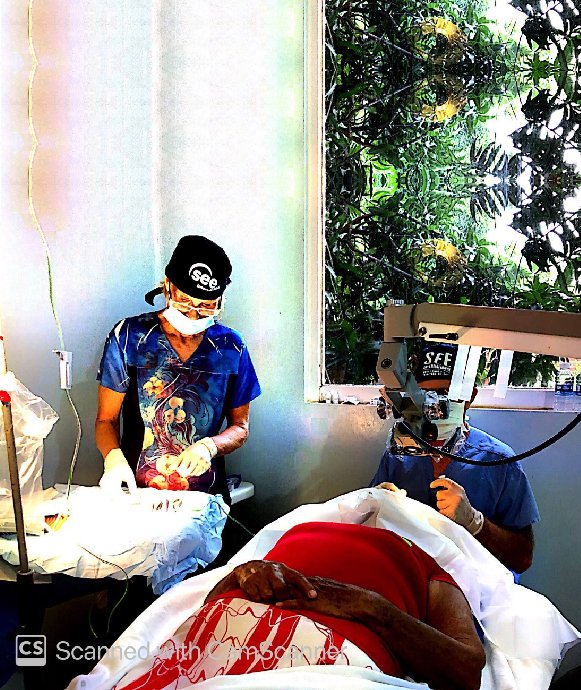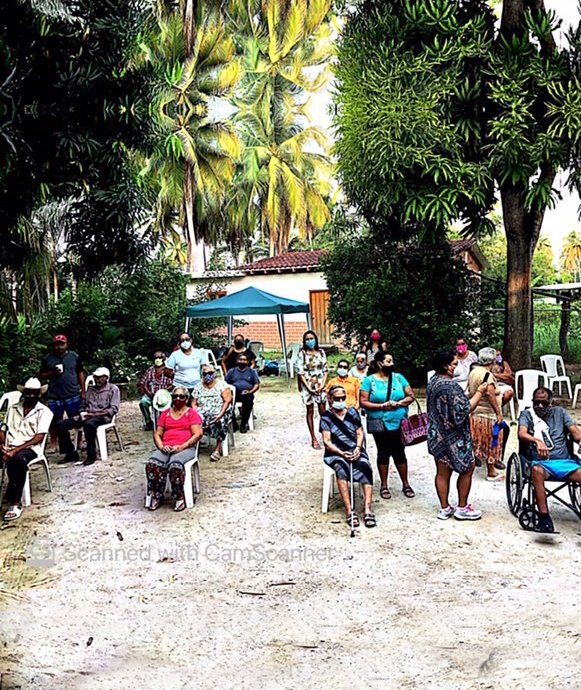Q4 2020 Newsletter
Client Spotlight: United Eye Center
By Curt Hill
This month’s Client Spotlight highlights the work of Jim Conahan of the United Eye Center of Highlands Ranch, Colorado. Jim Conahan MD finished his residency and ophthalmology in 1991. He went into private practice in Denver, Colorado shortly thereafter.
The Mission Of Healing EYES is a group of dedicated volunteers who follow Christian values in helping the blinded poor at our mission site in Zihuatanejo, Mexico.
Dr. Conahan and his wife Molly started this mission in 2006 after vacationing there and seeing a tremendous unmet need for free medical and surgical eye care in the blinded poor.
In 27 missions to date, they have done well over 3500 vision-restoring cataract surgeries, seen over 10,000 patients in clinic, dispensed well over 12,000 pair of glasses, and done hundreds of Yag lasers and argon lasers.
They just finished our last mission October 24, 2020. They were the first cataract mission in the world to do surgery since the Covid-19 pandemic started in March 2020.
They have a small group of dedicated volunteers from the U.S. that go on each mission, who are then joined by wonderful bilingual native volunteers.
The Times They Are A Changing
From Donna Connolly,
PMRG’s VP of Operations
As you may be aware, there are significant changes being made to the Evaluation/Management Codes in 2021. Below is a summary of the changes which relate only to new and established patient visits in 2021, codes 99202—99215.
Code 99201 will be deleted.
Clinicians may use either time or medical decision making to select a code.
There will be no required level of history or exam for visits 99202—99215. From the AMA website for 2021:
“Office or other outpatient services include a medically appropriate history and/or physical examination, when performed. The nature and extent of the history and/or physical examination is determined by the treating physician or other qualified health care professional reporting the service. The care team may collect information and the patient or caregiver may supply information directly (eg, by portal or questionnaire) that is reviewed by the reporting physician or other qualified health care professional. The extent of history and physical examination is not an element in selection of office or other outpatient services.”
Time will be defined as total time spent, including non-face-to-face work done on that day, and will no longer require time to be dominated by counseling.
Visits will have a range for time, e.g., 99213 will be 20-29 minutes, 99214 will be 30-39 minutes
There will be new definitions within Medical Decision Making (MDM).
The MDM calculation will be similar to, but not identical to the current MDM calculation.
Meet the PMRG Staff: Leigh Arklie
Leigh Arklie joined PMRG’s Client Services team in July 2018. She has a background working in Client Services for the last 11 years. Here at PMRG, Leigh has many responsibilities within the Client Services Department, including credentialing, handling and resolving client inquiries, and acting as a liaison between the billing team and our clients. Leigh also prepares PMRG’s invoicing and sends them to our clients. Leigh works remotely from Florida and has 8 years of experience working remotely.
In her spare time, Leigh and her husband enjoy hiking, visiting beaches, antique shopping, vinyl record collecting, and cooking. Leigh has a strong passion for finding tiki and mid-century decor and art. On the weekends, you can find Leigh at her local antique shops and estate sales. Both Leigh and her husband are music lovers and are very involved in their local community. They are known to travel the country to see some of their favorite musicians. Leigh and her husband both went to culinary school when they were younger and really enjoy cooking vegan, plant-based meals together.
Leigh and her husband have 4 pets that they consider their children. They have 3 rescue cats: Skooma is a 2-year-old Maine Coon, Kahless is a 5-year-old Calico, and Clementine is a 16-year-old Tabby. Their other pet is a 13-year-old Chihuahua Boston Terrier mix named Buscemi. Yes, their dog is named after the actor Steve Buscemi because he is Leigh’s favorite actor.
Leigh strongly believes in teamwork and is always willing lend a helping hand. She loves being part of the PMRG team and is thankful for the opportunity to learn and grow.
Preparing for Deductible Season
By Paula Muhlenbruch
We are coming into the home stretch of 2020 and the new year of 2021 is just around the corner! Along with the new year comes another Deductible Season. This is a time where you will see an increase in patient AR and a decrease in insurance payments. If you educate your staff and focus on a few items, you can overcome the predictable cash flow issues that are about to come.
Understanding how patients’ benefits work will go a long way to helping your staff know what to collect in the office at the time of visit. Your staff should understand the difference between the 3 major areas of patient responsibility and when to collect them:
Copay – set fee established by the insurance plan that a patient is responsible for any time they receive a particular service
Co-insurance – patient’s share of the liability for the services; a set percentage of the procedures allowed amount
Deductible – set amount a patient must pay before insurance coverage kicks in
Of the 3 items listed above, collecting copays are the easiest. If you mandate your staff to collect copays at the time of visit, you will be one third of the way there. Deductibles and co-insurances are more of a challenge; knowing when and how much to collect can be difficult.
Medicare Part B patients are the easiest to handle. At the start of the new year, the patient deductible will go up to $203. Once it is met, their 20% co-insurance will kick in. Making sure your front office staff is aware and understands this process at the beginning of the year and that they are collecting something at the time of visit will go a long way with helping manage your cash flow.
Commercial plans are a bit trickier since they may have benefits that include copays for specific services, yearly deductibles, as well as co-insurances that are patient responsible. If your staff is contacting the carrier to confirm eligibility, at a minimum they should take the extra step of asking for a benefit summary. Some of the electronic eligibility systems/services will provide such additional data.
Knowing this information will help them know what to collect from the patient when they’re in the office. For example, Patient A’s benefits for physicians’ services are 100% of allowed amount after a specialist copay of $30 and Patient B’s benefits are 20% coinsurance subject to in-network deductible of $500. When Patient A comes into the office, the staff would know to only collect a $30 copay; the remainder of the visit would be covered 100% by their insurance. When Patient B comes in for the same service, they will have to meet their $500 deductible before the insurance will pay for anything, so the staff should collect the full cost of the allowed amount, not to exceed $500.
If your staff is not familiar with each carriers’ fees schedule, which most are not, it would be easiest to manage this process by having a deposit strategy in place for patients with deductibles that have not been met. You should set minimum fees that need to be collected at the time of service, letting the patient know that you will bill them for the difference. For example, Patient B (from above) is having an exam and testing today and you are not sure if they have seen any other physicians prior to coming to you. You’re also not sure if their deductible has been met. If you are the first physician the patient has seen this year, or they have a high deductible, having your staff collect a set fee—such as $75 for the exam and $30 per test—you will have collected something instead of nothing, which will help maintain your cash flow during deductible season.
“I couldn’t be happier with the service and would unreservedly recommend PMRG to any practice looking for ophthalmology-specific billing help.”
~ Darren H, MD





